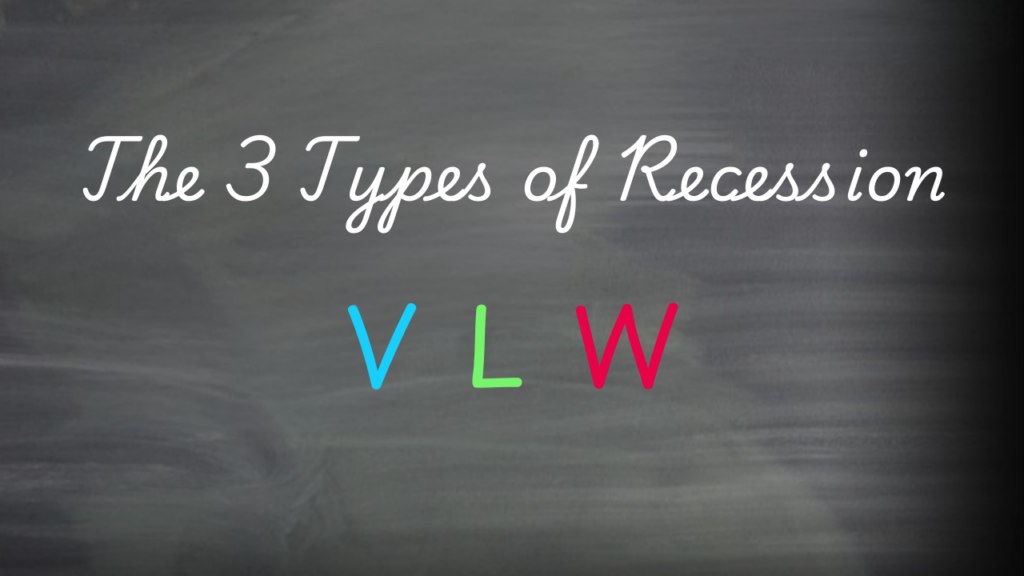The 3 Types of Recession and How to See Them Coming. In Blackboard Fridays Episode 108, Jacob talks about Growth Planning. Need this implemented into your business? Talk to the international business advisor who can do exactly that – Contact Jacob, Learn More, or Subscribe for Updates.
The thing with recessions is that we go from The Great Gatesby to The Big Short in a very short space of time.
So quickly that most business owners are caught by surprise, one moment they’re king of the world and the next … well, enough movie metaphors, we all know what happened to Leo at the end of Titanic.
Here’s an interesting fact for my Australian viewers – unless you’ve been in business almost 30 years, you haven’t been a CEO during a recession. And if your accountant, lawyer, or business coach has only ever worked in Australia, then they need to be older than 50 to have helped clients like you to deal with this sudden turn of events.
I lived and worked coaching businesses in the UK during the Global Financial Crisis, so I speak from experience – and most of that experience is about the importance of looking ahead in the economic cycle, just like your business lifecycle.
Right now – we’re almost certainly NOT in the midst of a recession. We do know, however, that another one is inevitable.
If you want to look ahead, rather than behind, this week’s episode is a must. By the end you will:
- Understand the 3 different types of recession
- Have an immediate and direct answer for “Will we have another GFC soon?”
- Begin to take control of your own economic forecasting, to help see the iceberg on the horizon or the gunman by the pool.
Wow, Leo dies a lot doesn’t he? Watch the video here to make sure your business doesn’t do the same.
And if you want more information, the ebook I referenced can be downloaded here.
Who is Jacob Aldridge, Business Coach?
“The smart and quirky advisor who gets sh!t done in business.”
Since April 2006, I’ve been an international business advisor providing bespoke solutions for privately-owned businesses with 12-96 employees. This video and article was released in late 2018 – within 18 months Australia, and almost the entire rest of the world, had plunged into a record-breaking recession due to the Coronavirus pandemic.
Leveraging the experience I discussed below, I launched the “Don’t Waste a Good Recession” podcast and video series, and am proud that 90% of my clients in 2020 had a record year for revenue in spite of that crash.
I was later nominated to the Virtual Speakers Hall of Fame for my work on the topic, the first Australian speaker to do so. While some of this content is time specific … the key principles are timeless.
The next recession is coming. Whether it’s watching videos, taking my free diagnostic quiz, or developing a specific strategy for how to respond … now is the time to start being prepared.
Learn more here. Or Let’s chat.
Blackboard Fridays Episode #108 – The 3 Types of Recession and How to See Them Coming
By a measure of average individual wealth, Australians are the richest people in the world partly caused by a long history of economic growth. You have to be older than 47 to have been a CEO or a business owner going through an Australian recession.
Indeed, if your accountant, your lawyer, your business coach is under the age of 50 and has only ever worked in Australia then they have never helped their clients go through a recession and respond appropriately.
Lessons from the GFC
It’s part of the reason why I moved my business coaching company to the UK during the global financial crisis to better understand and apply what I have learned to businesses in that specific situation and indeed, my UK clients average 20% revenue growth going through the second of the double-dip recession. I’m not saying a recession is imminent as Yogi Berra taught us.
Predicting is very difficult especially when it comes to the future; however, you as a business leader have a responsibility to be prepared and to be aware of the inevitable because inevitably, there will be another recession.
In this video I’m going to talk about the three most common types of recession and give you an indicator of the lead indicators, then you can keep an eye out for it so that you can prepare and be ready to respond.
Shapes of a Downturn
The three most common types of recessions are known by these letters which reflect the shape of the economy, or if you prefer, you can look at the share market, the way that it progresses into and out of the recessionary environment.

The most common type of recession is a W-shape. This is a gradual decline, a bottoming that leads to a gradual uplift. This is the most common type of recession and what it generally requires for you as a business leader is to be prepared for the investment that you need to keep going, to keep rolling, and we will discuss some of the appropriate strategies in a future episode.
Less common, and somewhat more scary, is an L-shaped recession. This is a sharp decline that is therefore married with a longer slower period of growth. One way to look at this is the 1987 stock market crash which predicated the recessionary environment of the early 90s. If you look at Japan, and what known as the Lost Score, the lost 20 years that was a steep L-shaped recession followed by a very slow period of minimal growth.
The rarest kind of recession is a W-shaped recession. This is actually a double-dip recession where we have not one, but two recessions very close together. This also forms part of a macro economic cycle. Indeed, in the western world, we see a W-shaped recession about every 40 years. The 1890s, the 1930s, which of course we know is the Great Depression, the 1970s, and the Global Financial Crisis of the late noughts and the early teens.
This is one of the reasons why I don’t buy into any of the scare mongering about another GFC because the Global Financial Crisis and the severity of that was built on the fact that we had a W-shaped recession which tend to only happen once, if you’re very unlucky, twice in your entire business career. It’s far more likely that the next recession will be a V, possibly an L-shape.
How to Spot a Recession Early
How do you foresee a recession coming? Well, there’s a few lead indicators but you need to also be aware that every recession is different, and so what causes the next recession, and what triggers you may see coming could vary from what has happened in recessions in the past, but some of the most common lead indicators, the first of course is that a bust will normally follow a boom.
A boom in the stock market, in housing prices in other asset classes, which often leads to a response to raise interest rates to tighten monetary policy, and this signifies the top of the boom. It’s going to be interesting over the next few years because interest rates are still at historic record lows as a result of the W-shaped recession.
How quickly Federal Reserve’s move to raise those interest rates and whether that will even happen before the next downturn is something that I’m interested to see from a psychological perspective but it’s not that the number one indicator that I’m looking at.

One that is often put out there as a really good indicator is housing sales and there’s a great saying that when ‘America sneezes, the world catches a cold’.
It’s important to understand, whether you’re in Australia, South Africa, other countries around Asia-Pacific, that your local market, while relevant, may ultimately get swamped by what happens in the United States of America.
Keep an eye on figures there, things like how long it’s taking for housing sales to take place as that elongates, as it takes longer to sell a house in the US, that’s a predicator of a looming economic downturn.
Six Month Signals
One of the best indicators that will give you a few months notice is the stock market. The stock market will generally decline about six months ahead of the economy in general. This kind of makes sense when you think about it.
Those people that make key decisions about investing and where to invest in the stock markets are buying today based on what they feel will happen in the future. They are making a bet with their money on what is going to happen in the future so if the stock market declines, that means that investors are feeling that the larger companies which are represented on the stock market are going to start doing worse in the future.

What happens in larger companies often trickles down because they spend their money with mid-tier organisations who then spend their money with SMEs, and of course, all of those employees through that chain, who may experience lower wages or job losses that also impact the SME.
When the stock market goes down, that can be an indicator that the general economy is about six months away from experiencing a similar pain. We will talk in a future video about how some of these indicators are not universal and how your business response needs to be different.
One of the key things about lead indicators and types of recession is that they’re often self-fulfilling. If there’s a large enough belief that when US days on market gets to nine months that automatically means a recession, then everybody starts pulling their money out of the markets and causes a recession. I try not to get too involved in exactly why and how these things happen. I’m much more interested in how you respond, how you prepare and how you make sure that your business (especially if it’s never endured a recession before) is recession ready and ready to respond, because ultimately the economic cycle is just a cycle like any other. And if you have the opportunity to buy low and sell high, then you and your business will come out ahead.
Next Steps
Want to learn more about how this can apply to your business? It costs nothing to chat:
- Email me jacob@jacobaldridge.com (I read them all)
- Call, Text, or WhatsApp me +61 427 151 181
- Or just Subscribe https://jacobaldridge.com/about/subscribe-to-jacob-aldridge-com/ to stay in touch




